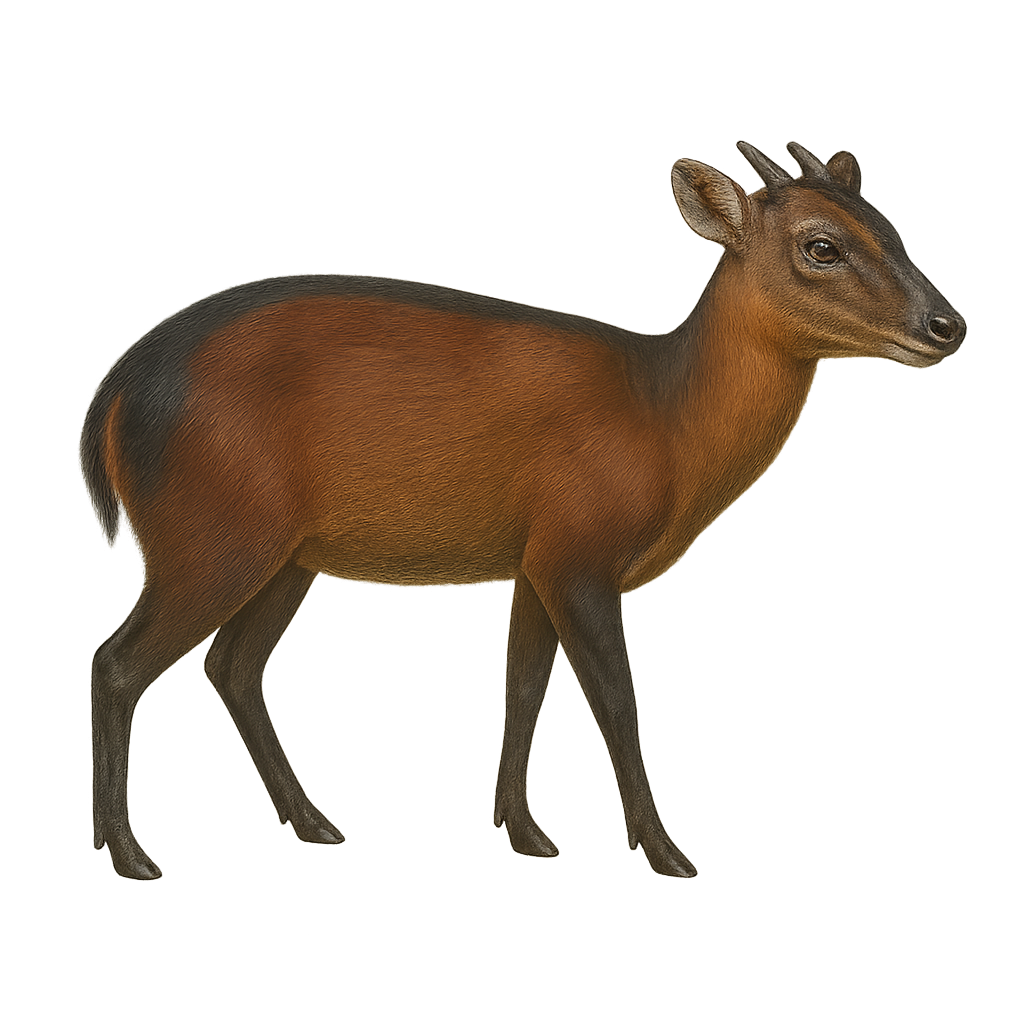Your wildlife photography guide.
Explore the bay duiker in detail, study its behavior, prepare your shots.
Where to observe and photograph the bay duiker in the wild
Learn where and when to spot the bay duiker in the wild, how to identify the species based on distinctive features, and what natural environments it inhabits. The WildlifePhotographer app offers tailored photography tips that reflect the bay duiker’s behavior, helping you capture better wildlife images. Explore the full species profile for key information including description, habitat, active periods, and approach techniques.
Bay Duiker
Scientific name: Cephalophus dorsalis

IUCN Status: Near Threatened
Family: BOVIDAE
Group: Mammals
Sensitivity to human approach: Very shy
Minimum approach distance: 10 m
Rut period: May to July
Gestation: 210-220 jours
Births: December to January
Habitat:
Dense forests, rainforests, wooded areas
Activity period :
Mainly active at night, generally discreet during the day.
Identification and description:
The Bay Duiker, or Cephalophus dorsalis, is a small forest antelope native to West and Central Africa. It is characterized by its reddish-brown coat with a distinctive yellow dorsal stripe. Measuring about 70 cm in length and standing 45 cm at the shoulder, it weighs between 15 and 20 kg. Both sexes have short, slightly curved horns. This duiker is primarily solitary, though it may be seen in pairs during the breeding season. It feeds mainly on fruits, leaves, and young shoots, playing a crucial role in seed dispersal. Its natural habitat includes dense forests, where it uses its small size to navigate through thick vegetation.
Recommended lens:
400 mm – adjust based on distance, desired framing (portrait or habitat), and approach conditions.
Photography tips:
To photograph the Bay Duiker, focus on dense forests where it is most active at dusk. Use a telephoto lens of at least 400mm to capture detailed images from a distance, as this animal is very shy. Be patient and discreet, blending into the environment to avoid startling it. Opt for low-light hours to benefit from soft, natural light, and use a tripod to stabilize your camera.
The WildlifePhotographer App is coming soon!
Be the first to explore the best nature spots, track rutting seasons, log your observations, and observe more wildlife.
Already 1 432 wildlife lovers subscribed worldwide

